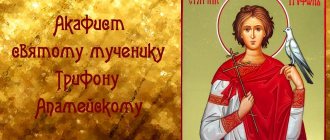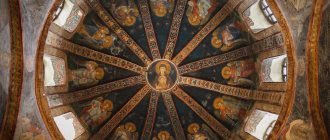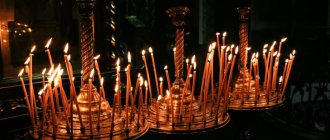The history of the candle
A long time ago, the prototype of a candle was a bowl filled with fat, with a sliver of wood playing the role of a wick. Later, the wood chips were replaced by a strip of fabric, but such lamps smoked, emitting an unpleasant odor.
Candles of modern design appeared in the Middle Ages. They were made from wax. They were expensive, so they were used in the houses of rich people, but their soot turned the ceilings black.
The classic form of a candle appeared in the 15th century. Two centuries later, candle wax was invented. The candles did not smoke, but were labor-intensive to make.
In 1820, the French chemist Chevreul invented stearic wax, which was solid, odorless and soot-free. Its production was not expensive. In the 20th century, thanks to chemists, petroleum wax or paraffin appeared. Later, refractory stearin was added to its composition.
What does a candle flame mean, how to read it?
To read by fire, you don't need to burn large logs or start a fire. It is enough to mentally ask a question, light a candle and carefully observe the fire for the next minute (it is better to close the window and not sit in a draft, so as not to disturb the flow of energy).
For love fortune-telling, use a red candle, for fortune-telling with money - a green one. When asking about spiritual matters, burn a purple candle, and when it comes to career and education, choose a blue one. The white candle is universal and can be used for any issue.
Candle in folk beliefs
The fire of a wax church candle is considered sacred and cleansing. Once upon a time, especially in villages, there were such candles in every home. They were different and for all everyday occasions. Some lit during thunderstorms, others on holidays. Still others were specially kept to be distributed along with alms to the poor.
Here are the types of candles, according to popular belief, that exist:
Passionate candle
This was bought at church on Maundy Thursday. Therefore, it was also called Thursday and Gospel fire.
The candle was carried from the temple lit, carefully protected from the wind with the help of a special flashlight. At home, a cross was burned on the wall or door with a flame. This supposedly protected from evil spirits and unkind glances.
A passionate fire was lit if someone in the family was sick, if the mistress could not give birth, and even when someone died. Legends also claim that a passionate candle lit in the corner of a house at night would reveal the brownie.
Blagoveshchenskaya
This candle was brought from the church after the festive Annunciation service. Popularly - on the day of the Annunciation, which falls on April 7 according to the modern calendar).
Even in the pre-Christian era, this day was revered as special, when “spring overcame winter.” The Slavs believed that on the Annunciation, birds fly from Virium (the kingdom of the dead), and reptiles crawl out of the ground. It’s no wonder that at this time they told fortunes, called for spring, and performed many magical rituals.
Including, later, with the Annunciation candle. For example, they lightly burned her hair with fire, believing that this would ensure health for the whole year.
Easter
A candle bought on Easter was also a powerful amulet. They fumigated hives with it, took it out into the field - it, the peasants believed, protected the land from moles.
Jordanian
Brought home for Epiphany. In Slavic magic, this day was associated with Dana, the goddess of water. According to legend, the Jordan candle wards off thunderstorms, floods, and fires. Lighted for a wedding, it promised fertility and prosperity.
The children had their hair at their temples lightly burned with a candle. Such a ritual relieved them of fears and “enlightened their heads with reason.”
Gromnichnaya
It was made from three, thinner candles at once on the day of Gromnitsa. In the post-pagan era - the feast of Candlemas. Such a candle was placed in the hands of the dying, because “a thunderous fire illuminates the road to the next world.”
The flame of this candle has great magical power. It was used when women had difficult births or when a fire broke out in the village. And, of course, in the hour of a thunderstorm or storm.
In some places, they also believed that the loud candle protected the village from wolves. If you enter a barn at night with such a lit candle, you can see a brownie.
Wedding
She occupied a special place in the house. After the wedding, the bride and groom's candles were brought from the church. Then they put it in a bowl with wheat and lit it all night. This, they believed in the villages, ensured the fertility of the family and household.
“Unequal marriage”, artist Vasily Pukirev, 1820
Fraternal or secular
The candle was the property of the entire village community. It was made with money collected together, and it happened to weigh several pounds. The secular candle was kept by all the parishioners in turn. People claimed: the owner who keeps a candle at home this year is guaranteed a good profit from the apiary.
It was customary to light a brotherly candle on the eve of a temple holiday. On the holiday itself, she was consecrated in the church. Holding a brotherly candle at home was a great honor. And also good luck - it was believed that it protects the house and household members from everything bad.
Trinity candle
Protection from evil spirits, witchcraft and the machinations of witches. It consisted of three candles, which were dedicated to the earth, sun and moon. They were tied with colored ribbons, supplemented with dried herbs, Kupala and Makovei, and spikelets from their own field.
Particularly powerful, legends say, was the trinity candle, made from wax from a personal apiary. It was lit during natural disasters and placed in the hands of deceased family members.
This is how the fire of a candle “fused” pagan rituals and Christian traditions together.









